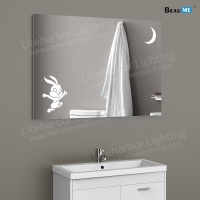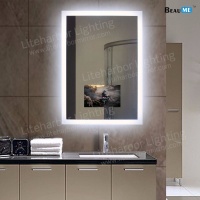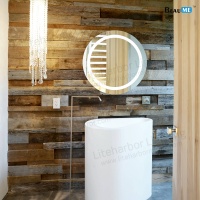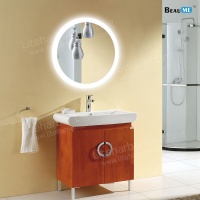 RESOURCE
RESOURCE
The anti-fog mirror is a lens that can effectively prevent or avoid condensation of water mist, and is generally classified into an organic anti-fog mirror and an inorganic anti-fog mirror. Inorganic anti-fog mirrors are generally coated with an anti-fog film on the surface of the glass to achieve anti-fog. Organic anti-fog mirror is divided into coated anti-fog lens, electric anti-fog lens and Nano composite anti-fog lens.
There are two reasons for the fogging of the lens: one is the hotter gas encounters a colder lens and produces liquefaction. The other is the moisture on the surface of the skin sealed by the glasses evaporates, and the gas on the lens condenses. This is also the main reason why spray anti-fogging agents do not work.
Inorganic anti-fog mirror
According to the material of the anti-fog film, it is mainly divided into three types:
1. PVC-resistance wire anti-fog film, the material is: polyvinyl chloride + resistance wire. The disadvantages of this are film in the production will add lead salt stabilizer, it’s toxic, hot and soft, and harden after power off, aging easily, the entire anti-fog film is a heating wire in series, once there is a break, and the entire anti-fog film is scrapped. But he advantages are good ductility and electrical insulation performance, convenient material selection and low price. The overall service life of this film is 4-5 years.
2. PET- resistance wire anti-fogging film, material: Polyester + resistance wire. The characteristics of this film are: the surface of PET film is smooth, non-toxic and environmentally friendly, heat-resistant and wear-resistant, corrosion-resistant and anti-aging. The overall service life of this film is 8-10 years.
3. PET- carbon fiber anti-fogging film and it is made of polyester + carbon fiber. The production process of this film is tedious, long time and high cost. High toughness, tensile resistance, long service life (20 years or more), surface heating body, high temperature resistance, oxidation resistance. Multi-line parallel connection, even if a certain point breaks, does not affect the anti-fog performance of the whole film, the temperature can be adjusted independently within a certain range, it is not easy to be deformed and broken, and can be reused. Because of the stability and high service life of this film, the anti-fog film is generally chosen for the decoration of high-end hotels. However, this carbon fiber anti-fog film has a relatively high price for the carbon fiber anti-fog film because of the complexity of material selection and processing.
Organic anti-fog mirror
1. Coated anti-fog lens
Block the form of the fog layer by coating the micro-pores. It can be sealed on mirror and glass. Anti-fog coating is generally rich in conductive materials A TO and silicon oxide. Form a super-hydrophilic anti-static antibacterial agent with inferior anti-fouling, anti-fog and anti-static effects.
2. Electric anti-fog lens
The mirror surface humidity is increased by electric heating. Thus, a fog layer cannot be formed. In addition, the mist will evaporates quickly.
3. Nano composite anti-fog lens
The Nano glass anti-fog mirror film is a combination of physical and chemical phases and glass. Since the water cannot form water droplets on the surface of the substrate, the treated glass surface has a hydrophilic function. Instead, a uniform water film is formed to achieve an anti-fog effect.

 Liteharbor Illuminated Art Mirror with Animals Silhouette
ITEM No.:MR-037-X02
Liteharbor Illuminated Art Mirror with Animals Silhouette
ITEM No.:MR-037-X02 Liteharbor hospitality/Hotel/Salon Customized Size Smart Magic Mirror Lights
ITEM No.:MR-029-TV-10
Liteharbor hospitality/Hotel/Salon Customized Size Smart Magic Mirror Lights
ITEM No.:MR-029-TV-10 Liteharbor Customized Size Round LED Bathroom Mirror Light
ITEM No.:MRR-024
Liteharbor Customized Size Round LED Bathroom Mirror Light
ITEM No.:MRR-024 Liteharbor Customized Size Round Illuminated Bathroom Mirror
ITEM No.:MRR-026
Liteharbor Customized Size Round Illuminated Bathroom Mirror
ITEM No.:MRR-026
Copyright 2014 Liteharbor Lighting Technology Co.,Ltd. All rights reserved.
Tel:+86-757-81808675 Fax:+86-757-81808685 Email:Info@liteharbor.com
New Industry Area Hecun Danzao Town Foshan City China